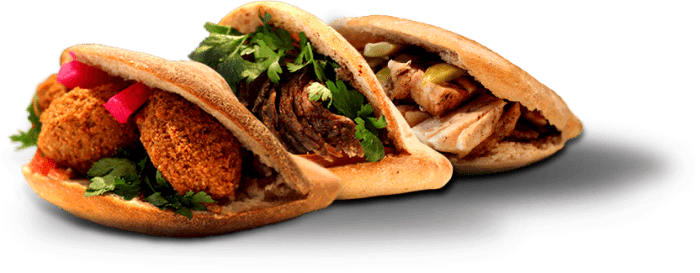A History of the Sandwich
I've spent half a century (yikes) writing for radio and print—mostly print. I hope to be still tapping the keys as I take my last breath.
It’s commonly thought that John Montagu, the fourth Earl of Sandwich created what is probably the most popular item ever to come out of a kitchen. In reality, however, he didn’t create the dish—he merely gave his name to it.
The earl was at the gambling table one evening in 1762 when he announced that he was a trifle peckish. He did not want to rise from the table (at which he was an unusually skilled loser), so a lowly servant was dispatched to bring his master a slab of meat between two slices of bread. As the aristocrat chomped on his snack, his gambling buddies noticed and thought, “What a capital idea. I’ll have the same as Sandwich.” And the name stuck.
The Sandwich Name
The anecdote of John Montagu at the gaming table might even be true, as a record of the event exists in print. No less an authority than Edward Gibbon, he of The History of the Decline and Fall of the Roman Empire fame, puts his stamp of approval on the story.
In 1762, Gibbon wrote in his journal after a convivial evening at his gentlemen’s club, “That respectable body, of which I have the honour of being a member, affords every evening a sight truly English. Twenty or thirty, perhaps, of the first men in the kingdom, in point of fashion and fortune, supping at little tables covered with a napkin, in the middle of a coffee-room, upon a bit of cold meat, or a sandwich, and drinking a glass of punch.”
A decade later, French writer Pierre-Jean Grosley gave the world his observations on how the English went about their lives. In 1772, he wrote “A minister of state passed four and twenty hours at a public gaming-table, so absorpt in play, that, during the whole time, he had no subsistence but a piece of beef, between two slices of toasted bread, which he eat without ever quitting the game. This new dish grew highly in vogue, during my residence in London; it was called by the name of the minister who invented it.”
Ancient Origins
The idea of putting a filling between two slices of bread did not come out of nowhere. The Earl of Sandwich had traveled in the Eastern Mediterranean, where eating pita bread stuffed with fillings was common.
We can trot back more than two millennia in that part of the world to meet the Korech. This is a Jewish sandwich that is eaten at Passover and is the creation of Hillel the Elder, a rabbi who lived in Jerusalem during the reign of King Herod.
The Korech, or Hillel sandwich as it’s often known, commemorates the Jewish escape from Egypt. Bitter herbs, horseradish, and lettuce are placed between two slices of matzo unleavened bread. The herbs, said Hillel, represent the bitterness of slavery.
But this kind of “sandwich” was already part of the cuisine of the region and had been around, probably, for thousands of years. Crumbs of flatbread have been found at archaeological sites in what is now Jordan dating back as far as 14,600 years. It’s not hard to imagine these people putting a bit of something, roast goat perhaps, between slices of flatbread.
All Praise to Otto Frederick Rohwedder
The advertising line was “The greatest forward step in the baking industry since bread was wrapped.” We have Iowa inventor Otto Rohwedder to thank for this civilization-advancing breakthrough of 1927 vintage. The “greatest step” was the invention of a bread-slicing machine.
Prior to Otto, bread slicing was something that was frequently accompanied by bloodshed and sometimes a lost digit or two. With sliced bread in the kitchen, the kiddies could now make their own peanut butter and jelly sandwiches without risk of permanent mutilation. The availability of pre-sliced bread caused an explosion in the popularity of sandwiches, which soon became the default lunch item.
Sandwich Varieties
Mrs. Beeton of cookbook notoriety gives a recipe for a toast sandwich. Now, pay attention; this is a difficult dish to construct. You place a piece of cold toast between two slices of bread and season it with salt and pepper. Now, doesn’t that get the juices flowing in anticipation? Who says the English are not creative cooks?
Let’s stay in the sceptered isle for another culinary masterpiece—the chip butty. It’s every bit as complicated as a toast sandwich; French fries, or chips as they are known in Britain, are placed between two slices of liberally buttered white bread. For the authentic British experience, the chips ought to be very greasy—a carb counter’s nightmare. Oh! Butty is a northern British dialect word for sandwich.
Then there’s the bacon sarnie (more British slang for sandwich). Again, a tricky creation. Fry up masses of bacon and put them between . . . well, you guessed it. An important addition is a generous squirt of brown sauce.
The Great Depression in America gave us the po' boy. Streetcar workers in New Orleans were on strike. A couple of brothers, Benny and Clovis Martin, had been streetcar conductors who moved on to the restaurant business. They said they would feed any striker for free.
When one came into the shop looking for a meal, the staff would say “Here comes another poor boy,” only of course, with New Orleans pronunciation, it came out as "po’ boy." Traditionally, a po’ boy is a baguette filled with meat or fried seafood. It's a nice story, but serious historians have their doubts.
Favourite Sandwiches
Let us step outside the bounds of ham and cheese, tuna salad, and the bacon, lettuce, and tomato sandwiches. We all have a favourite. The writer’s is the Reuben.
It was created in a deli in Omaha, Nebraska by Reuben Kulakofsky. In the 1920s, there was a weekly poker game at the Blackstone Hotel in which Kulakofsky was a player. So as to stay at the table, the group needed a snack, and here we come full circle back to the Earl of Sandwich.
Reuben Kulakofsky created the Reuben sandwich to handle the job. It consists of a thick pile of corned beef, sliced so thin it only has one side, warm sauerkraut, melted Swiss cheese, and Russian dressing in toasted rye bread. Clearly, Mr. Kulakofsky was not a deeply observant member of his religion because mixing meat and dairy violates Jewish dietary laws.
What’s your favourite? We’re going basic here; no sea asparagus, deer lichen, Mongolian yak cheese, or other exotica that bestow upon sandwich dispensers the right to charge $34.99 for a morsel of bread and a smear of filling.
Here’s a poll judging the popularity of eight relatively simple sandwiches. You’ll notice the not-so-simple Reuben has been snuck into the list. Please add your own favourites in the comments below.
Sandwich Popularity
Bonus Factoids
- According to PBS, each American eats about 200 sandwiches a year—that’s about 300 million sandwiches a day.
- The United States celebrates National Sandwich Day on November 3rd, the birthday of the Earl of Sandwich.
- The 11th Earl of Sandwich got together with Planet Hollywood to start a sandwich shop chain. There are about 30 outlets in the United States. One of its products is the “Original 1762,” which combines hot roast beef, cheddar cheese, and horseradish sauce.
- In medieval Europe, people did not eat their meals off plates; instead, food was served on a piece of stale bread about six inches by four inches. This was called a trencher and it absorbed the sauce from, say, a venison stew. If the diner was still hungry after the meal, he or she could eat the trencher. Otherwise, it was thrown out, fed to the dogs, or given to the poor.
Sources
- “Discover the History of the Sandwich.” Tori Avey, PBS, January 3, 2013.
- “A Tour to London, Or, New Observations on England and Its Inhabitants, Volume 1.” Pierre Jean Grosley, Lokyer Davis, 1772.
- “Hungry? A Brief History of the Humble Sandwich.” BBC News, July 13, 2018.
- “The Story of the Sandwich.” Stephanie Butler, History, July 18, 2014.
© 2018 Rupert Taylor
Comments
Rupert Taylor (author) from Waterloo, Ontario, Canada on August 01, 2018:
Thanks for that. I will see if I can track down a Muffaletta here in the frozen north. We have a rich Italian heritage in Canada and, of course, Cajun is a corruption of the word Canadian, because the Acadian people were expelled from Nova Scotia in 1713 and they settled in Louisiana. It was then French territory so it suited the French-speaking Acadians well, except for the climate - that must have been one hell of a shock. But I ramble. I agree that Italy has to be the culinary centre of the universe.
Wesman Todd Shaw from Kaufman, Texas on August 01, 2018:
I had thought it was a Greek sandwich, but I just now Googled to make certain I was stating the correct thing, and the Big G says the word could refer to either a specific type of Italian bread, or a sandwich created by Italian immigrants to New Orleans.
What I remember is eating with my parents as a young child at some place in Dallas, Texas; and I liked the sandwich they ordered for me so much that more than once, as a small child, I requested that for my birthday we go eat at that place I like where they have that great sandwich.
Where I live we've lots of Mexican culture, and just over to the east is Louisiana, and there are not enough words to describe how unique and great I think the cuisine of the Cajuns is. The Cajuns of Louisiana...or nearby places, can really do some special things with food.
I had already thought of Italians as maybe the best food people on the planet, so it isn't any wonder how Italians in Louisiana would make a huge impression on my taste buds.
Besides the Italian meats and cheeses, the mufaletta has a very interesting vegetable bled which is what gives it its distinct character. It's all dices up, and includes black and green olives, carrots, cauliflower, oregano, and garlic.
Of course you can expect the diced vegetables to have been soaked in olive oil.
I couldn't possibly recommend a sandwich any more to someone :)
Rupert Taylor (author) from Waterloo, Ontario, Canada on August 01, 2018:
Muffaletta? Details please.
Wesman Todd Shaw from Kaufman, Texas on August 01, 2018:
Excellent article. It is informative and entertaining, and it induces hunger. I'd already had a once frozen burrito on the skillet warming up, and now I'll devour that sandwich cousin with a bit more gusto.
I'm with you on the Reuben, that, that's been one of my favorites for a long time. Unless someone makes a Reuben at home, then the only place I know to go where they're always making them is Schlotzsky's. Another of my favorites is also uncommon here in north Texas, the muffaletta.
Long may the sandwich be honored in our kitchens, and on our plates.






















